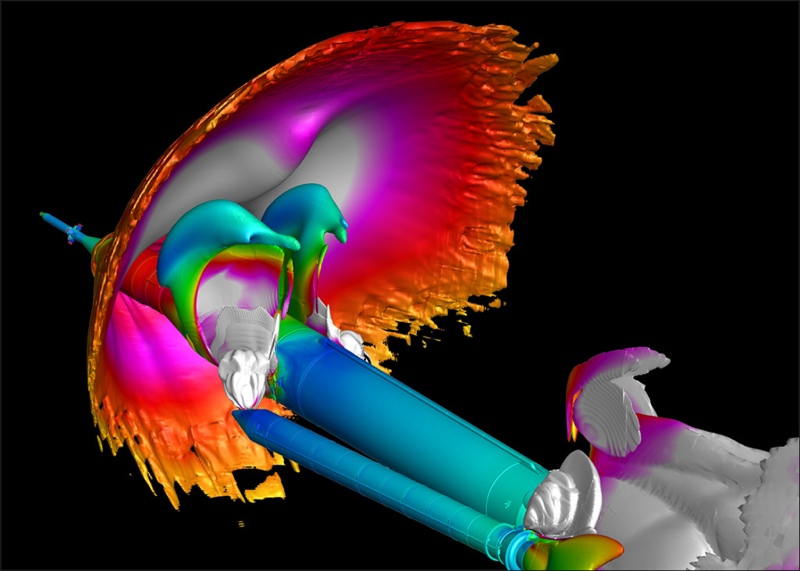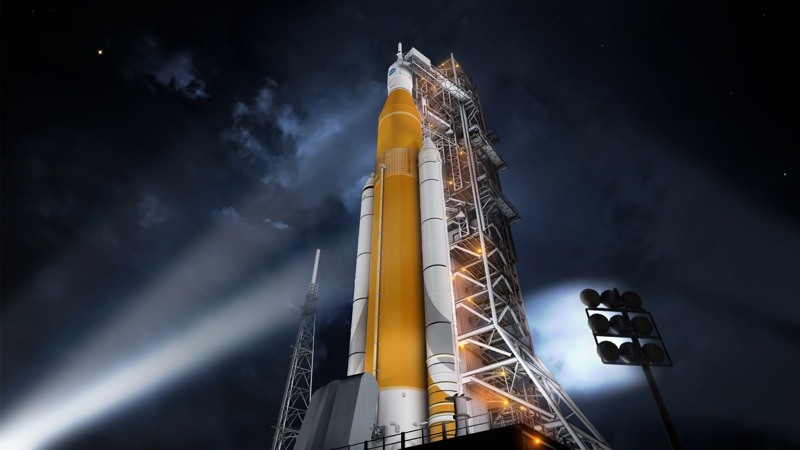If there is one type of 3D-imaging story that interests readers across all industries and verticals, it’s definitely the type about NASA. The agency has purchased 24 Leica Nova MS50 MultiStations (total stations with built-in laser-scanning hardware) as part of the hardware-testing process for their new Space Launch System.
The SLS is the new rocket propulsion system that NASA has been working on for quite some time. The final configuration is set to be 70 metric tons, and include four RS-25 engines for the core stage as well two five-segment boosters. The idea is create a rocket propulsion system that offers more lift into orbit than any vehicle currently existing.
As NASA makes progress on the development of the SLS, the agency must test each article for structural integrity to ensure that it can withstand the incredible loads it will experience during flight.

Computer model of a shock wave at the front of the SLS vehicle at the time of booster separation during launch. Courtesy of Rocketology blog.
As David Hitt explains over on Rocketology (the blog that chronicles the development of the SLS), that stress is no joke. The SLS will generate up to 8.8 million pounds of thrust. After launch, as the system approaches Mach 1, “shock waves move over the entire vehicle. Friction from just moving through the air causes the nose of the vehicle to heat. The shock waves coming off the booster nose cones strike the core stage inter tank and can raise the temperature to 700 degrees. The foam insulation not only keeps the cryogenic tanks cold, it keeps the heat of ascent from getting into the inter tank structure between the hydrogen and oxygen tanks.”
To ensure that the system is up to the task, NASA will perform tests using large structural stands built to artificially stress the liquid and hydrogen oxygen tanks. The stands will re-create the stresses that these tanks will endure during launch.
What Does Laser Scanning Do?
The structural stands will be loaded up with the 10 MultiStations that NASA already has, as well as the 24 new units, as well as 22 Leica Viva TS15 robotic total stations. All of these devices will be used to monitor the deflections of these tanks, or the degree to which the tanks are displaced under the load.
As David Rutledge, NAFTA director of structural monitoring for Leica Geosystems explained in an official statement, “Comprehensive surveillance of the test article deformation throughout the testing period with both the Leica Nova MS50 and Viva TS15 instruments will provide highly accurate data that will help NASA engineers understand article performance and guide them in future rocket development. We’re excited to be able to play a role in the continued progress at Marshall Space Flight Center.”






